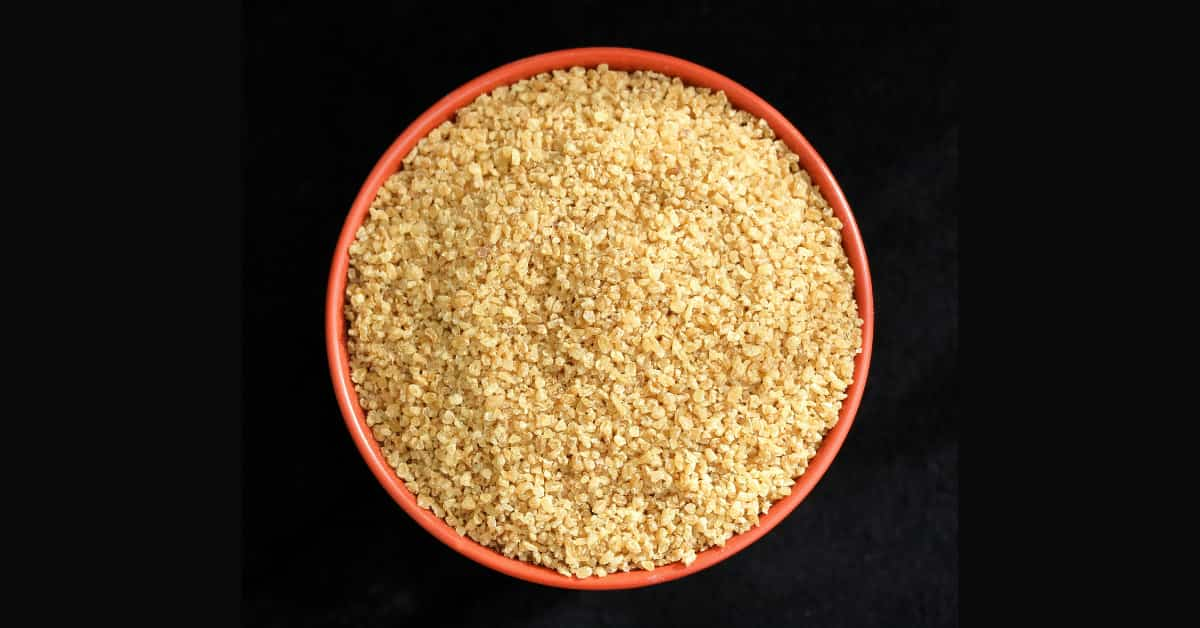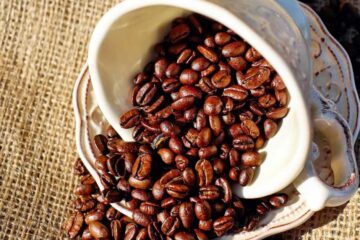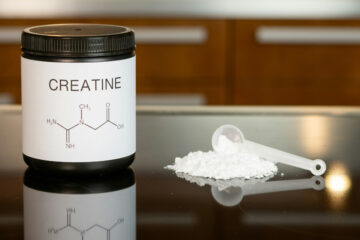Table of Contents
Introduction
Bulgur is defined as whole wheat kernels broken into cracked wheat that are precooked, soaked, and dried. Various civilizations have consumed Bulgur since ancient times, and it is commonly used in dishes such as pilaf and tabouli. Bulgur wheat (also spelled “bulghur”) is an incredibly versatile whole grain with ancient roots in Middle Eastern, Mediterranean, and West Asian cuisines — and with good reason.
Traditionally, the nutritious cereal grain has been used to make a wide variety of dishes, including tabbouleh and kisir salads, bulgur pilaf (pilaf), kibbeh meat patties, fermented yogurt kishk, and kheer pudding.
Bulgur’s mild flavor makes it suitable for many uses. It’s also easy to prepare and has several health benefits.
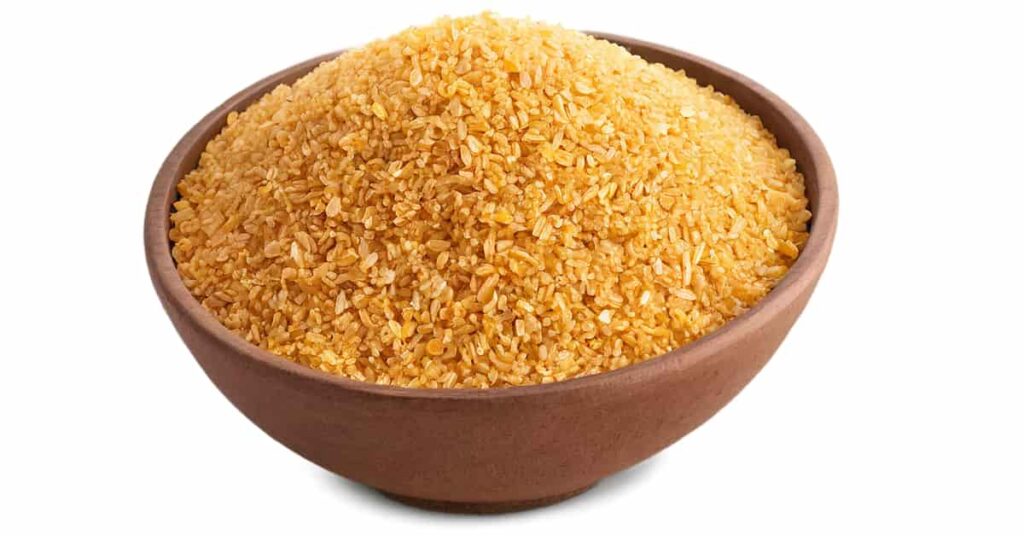
Bulgur wheat
Bulgur wheat is a whole grain food or meal made from cracked wheat that has been parboiled (partially precooked) and dried. It is a chief in Middle Eastern, Mediterranean, and South Asian cuisines.
This preliminary cooking process distinguishes Bulgur from other forms of cracked wheat (like cracked wheat groats). Because it is already parboiled, Bulgur cooks much faster than other whole grains and can often be prepared simply by soaking it in hot water.
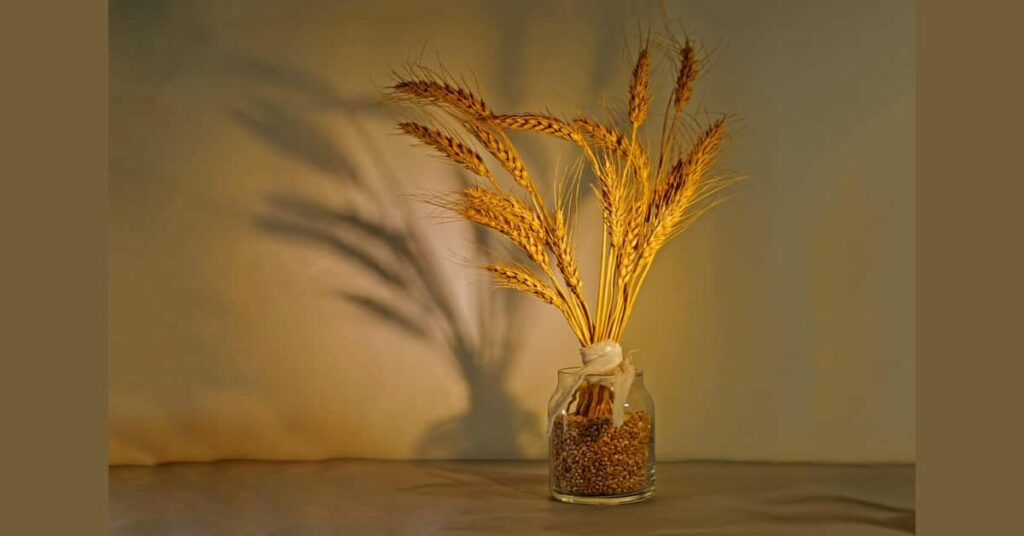
Key Characteristics:
- Whole Grain Status: Bulgur is considered a whole grain, meaning the entire wheat kernel—including the nutrient-rich bran, germ, and endosperm—is retained.
- Flavor and Texture: It has a light, earthy, and nutty flavor with a chewy texture similar to that of quinoa or couscous.
- Nutritional Value: It is highly nutritious, an excellent source of dietary fiber (often providing over 25% of the Daily Value per serving), and essential minerals like manganese, magnesium, and Iron.
- Culinary Use: It is the most famous ingredient in the Middle Eastern salad tabbouleh and ground meat dishes like kibbeh (meat patties). It can also be used as a quick substitute for rice or couscous in pilafs, soups, and side dishes.
- Grind Sizes: Bulgur is sold in various grinds, from fine (used for salads) to coarse (used for pilafs).
Types of bulgur wheat
There are four main kinds of bulgur grains: fine, medium, coarse, & extra coarse.
Fine Bulgur has a texture exact to couscous. It is a fast-cooking grain that does not need to be cooked or boiled. Soaking it for some minutes in hot water is all it takes. On the other hand, coarse bulgur wheat is a whole grain you may boil on the cooktop with just a bit of liquid and salt. Both kinds are easy and unfussy to prepare in minutes.
Nutrition
Bulgur wheat is a low-calorie whole grain that provides various nutrients. It is an excellent manganese, magnesium, Iron, protein, and fiber source.
One mug (180-gram) serving of cooked bulgur offers:
- Calories: 151
- Carbs: 34 grams
- Protein: 6 grams
- Fat: less than 1 gram
- Fiber: 8 grams
- Vitamin B6: 8% of the DV
- Pantothenic acid: 13% of the DV
- Manganese: 48% of the DV
- Copper: 15% of the DV
- Magnesium: 14% of the DV
- Iron: 10% of the DV
- Niacin: 9% of the DV
- Thiamine: 9% of the DV
- Zinc: 9% of the DV
- Folate: 8% of the DV
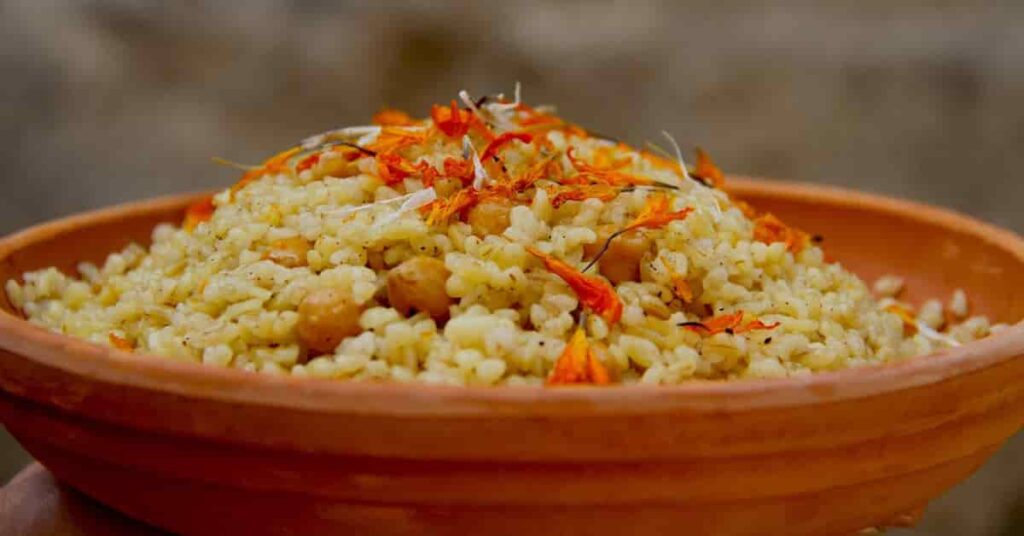
Bulgur wheat benefits
Bulgur wheat is celebrated as a minimally processed whole grain for its dense nutritional profile and numerous health benefits. Here are 15 detailed advantages of incorporating Bulgur into your diet:
- Exceptional Source of Dietary Fiber: A single cooked cup of Bulgur provides a large portion of the daily recommended fiber intake (often around 8 grams). This high fiber content is the foundation for many of its health benefits.
- Supports Digestive Regularity: The high insoluble fiber content acts as a natural bulk-forming agent, effectively preventing constipation and promoting regular, healthy bowel movements.
- Promotes Healthy Gut Microbiome: The fermentable fibers and resistant starches in bulgur act as prebiotics, feeding beneficial microbes in the colon, producing short-chain fatty acids (SCFAs) vital for intestinal health.
- Aids in Weight Management: Its high fiber and protein content increase satiety (fullness), which helps curb cravings, reduces overall calorie intake, and supports healthy weight loss or maintenance.
- Helps Control Blood Sugar: Bulgur has a lower Glycemic Index (GI) than many refined grains. The fiber slows the absorption of carbohydrates, leading to a steady, controlled release of glucose into the bloodstream, which is beneficial for managing Type 2 Diabetes risk.
- Reduces Heart Disease Risk: Consuming whole grains like bulgur is associated with a lower risk of stroke, heart attack, and heart failure. The fiber content helps lower “bad” LDL cholesterol levels.
- May Improve Blood Pressure: Combining high fiber and minerals like Potassium and Magnesium helps relax blood vessels (vasodilation), which can reduce hypertension (high blood pressure).
- Reduces Chronic Inflammation: Bulgur contains antioxidants and phytonutrients that help lower systemic inflammation. This is associated with lower risk factors for diabetes and heart disease.
- Rich Source of Manganese: A single serving often provides a significant percentage of the daily value of manganese, a trace mineral essential for metabolism, bone formation, and fighting free radicals.
- Good Source of Plant-Based Protein: Bulgur provides six grams of protein per cooked mug, making it a valuable, low-fat source of plant protein that supports muscle repair and growth.
- Excellent Source of B Vitamins: It is rich in B vitamins such as Niacin (B3), Thiamine (B1), and Pyridoxine (B6), which are crucial cofactors in converting food into cellular energy.
- Supports Bone Health: Essential minerals like Magnesium and Phosphorus help build and maintain bone mineral density, offering protection against age-related bone decline, such as osteoporosis.
- Fights Iron Deficiency (Anemia): Bulgur provides essential Iron, which is crucial for making or producing red blood cells and supporting oxygen transport throughout the body. It also helps to prevent fatigue and weakness associated with anemia.
- Potential for Colorectal Cancer Prevention: High fiber and the production of SCFA butyrate in the colon are strongly linked to maintaining the health of the colon lining, which may lower the risk of colorectal cancer.
- High Bioavailability of Nutrients: Because Bulgur is parboiled during processing, this step may help destroy the grain’s anti-nutrients (compounds that interfere with mineral absorption), making its vitamins and minerals easier for the body to absorb and utilize.
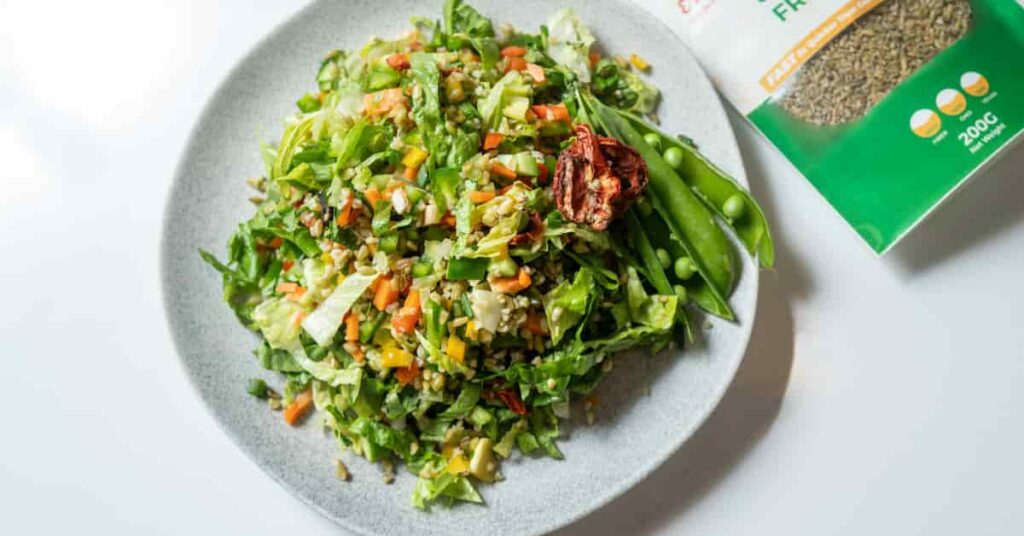
bulgur wheat salad
The most famous and classic bulgur wheat salad is Tabbouleh (also spelled Tabouli or Tabouleh), a refreshing, vibrant Middle Eastern salad.
It is unique because it is traditionally an herb salad that uses Bulgur as a binder and textural element, rather than a grain bowl where the grain is the main component.
Directions:
- Soak the Bulgur: Place the dry bulgur wheat in a medium, heat-safe bowl. Pour one mug of boiling water (or broth) over the Bulgur. Cover the utensil tightly with a lid and let it stand for 20–30 minutes until the liquid is fully absorbed and the Bulgur is tender and fluffy. Fluff it with a fork.
- Prep Vegetables & Herbs: While the Bulgur soaks, finely chop all the fresh ingredients (parsley, mint, tomatoes, cucumbers, and green onions). Finely chopping the herbs is key to the Tabbouleh texture.
- To make the Dressing, swish the olive oil, salt, pepper, & lemon juice in a small mug.
- Combine & Dress: Combine the fluffed Bulgur with all the cut vegetables and herbs in a large mixing bowl. Pour the dressing or sauce over the salad & toss gently to ensure everything is equally coated.
- Season & Serve: Taste the salad and add more salt, pepper, or lemon juice to achieve a bright, zesty flavor balance. Serve instantly or chill for a more refreshing taste.
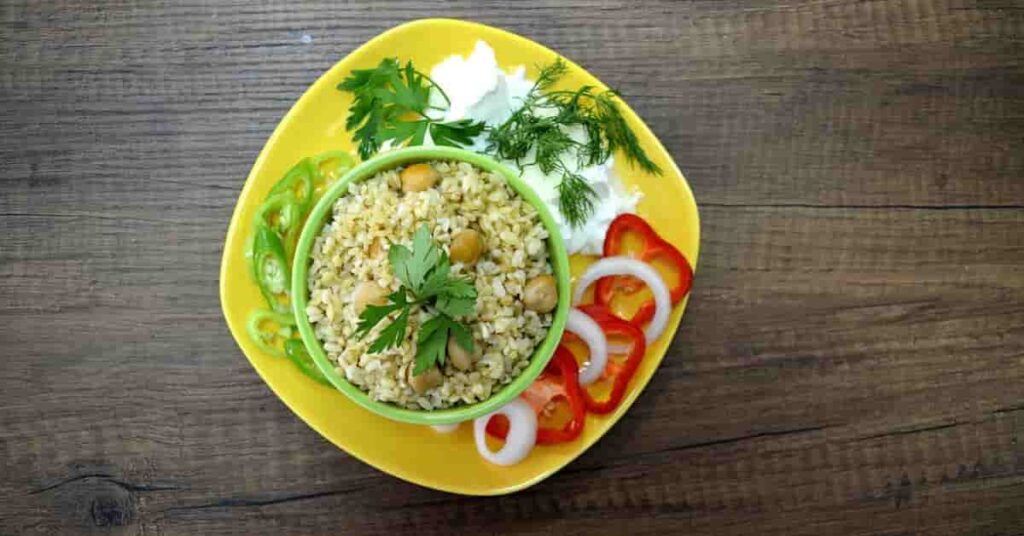
Mediterranean Variation Toppings:
To make a more substantial Mediterranean-style salad, add ingredients like:
- Crumbled Feta Cheese
- Pitted Kalamata Olives
- Chickpeas (Garbanzo beans) for extra protein
- Pomegranate Arils (seeds) for color and tang
- A dash of Ground Cinnamon or Sumac in the dressing for a deeper, authentic flavor.
Bulgur wheat in India
Bulgur wheat is most commonly known in India by its Hindi name, Daliya (or Daliya Wheat).
While Daliya technically refers to any broken or cracked whole wheat, Bulgur is considered a specific, distinct version of this cracked wheat.
Key Context for Bulgur in India:
- Interchangeable Names: Daliya, broken wheat, Cracked Wheat, Lapsi (especially in Gujarat), and fada are often used interchangeably to refer to the same whole grain product derived from wheat.
- The Processing Difference: In strict culinary terms, Bulgur is broken wheat that has been parboiled (partially precooked) and dried. This precooking makes preparing extremely quick (often requiring just a soak in hot water). Daliya, when sold plainly as broken wheat, may be raw and require longer cooking (like boiling or pressure cooking).
- Culinary Use: In India, both Dalia and Bulgur are valued for being highly nutritious, high in fiber, and easy to digest. They are primarily used to make:
- Savory Dishes: Daliya Khichdi (a wholesome porridge with vegetables and lentils), Upma, and Pilafs.
- Sweet Dishes: Porridge (Meethi Dalia) cooked with milk, sugar/jaggery, and cardamom.
- Availability: Due to the rising popularity of global and health foods, specific brands of Bulgur Wheat (often imported or produced by specialty Indian mills) are increasingly available in major grocery stores and online, alongside the more traditional raw Daliya.
Bulgur wheat vs dalia
While the terms are often used interchangeably in an Indian context, Bulgur and Dalia are technically two different forms of broken wheat.
Here is the precise relationship between them:
- Dalia (Broken/Cracked Wheat): In India, Dalia is the common name for broken or cracked wheat, which means whole wheat kernels that have been coarsely ground or milled. It is an uncooked, minimally processed grain staple used widely in Indian cuisine for dishes like khichdi and sweet porridge.
- Bulgur Wheat: Bulgur is a specific type of broken wheat that has undergone an additional step: the whole wheat kernel is parboiled (partially precooked) and then dried and cracked.
The Key Difference:
The main distinction is the precooking process:
- Dalia is raw cracked wheat and requires complete cooking (like boiling or pressure cooking) to become soft.
- Bulgur is parboiled cracked wheat, which requires significantly less cooking time (often just soaking in hot water) and has a slightly nuttier, chewier texture.
Because the final products are very similar, Bulgur wheat is often marketed or referred to in English as “Dalia” in grocery stores and recipes, particularly when discussing its nutritional benefits and quick cooking time.
Bulgur wheat recipe
For medium-coarse Bulgur, combine 1 part bulgur with 1 3/4 parts water and salt. Bring to a boil, lesser to a simmer, cover, and let cook for about 15 minutes, or until the liquid has been absorbed and the Bulgur is tender.
Mix a 1:1 ratio of fine Bulgur & water in a small pot for fine Bulgur. Wait for boil, cover, & remove from heat. Allow to steam for 10 – 15 minutes. Remove the lid and fluff before serving.
Conclusion
Bulgur is an edible cereal grain or food made from parboiled, cracked wheat. Its texture resembles quinoa or couscous, and its mild flavor is usually explained as nutty or earthy.

